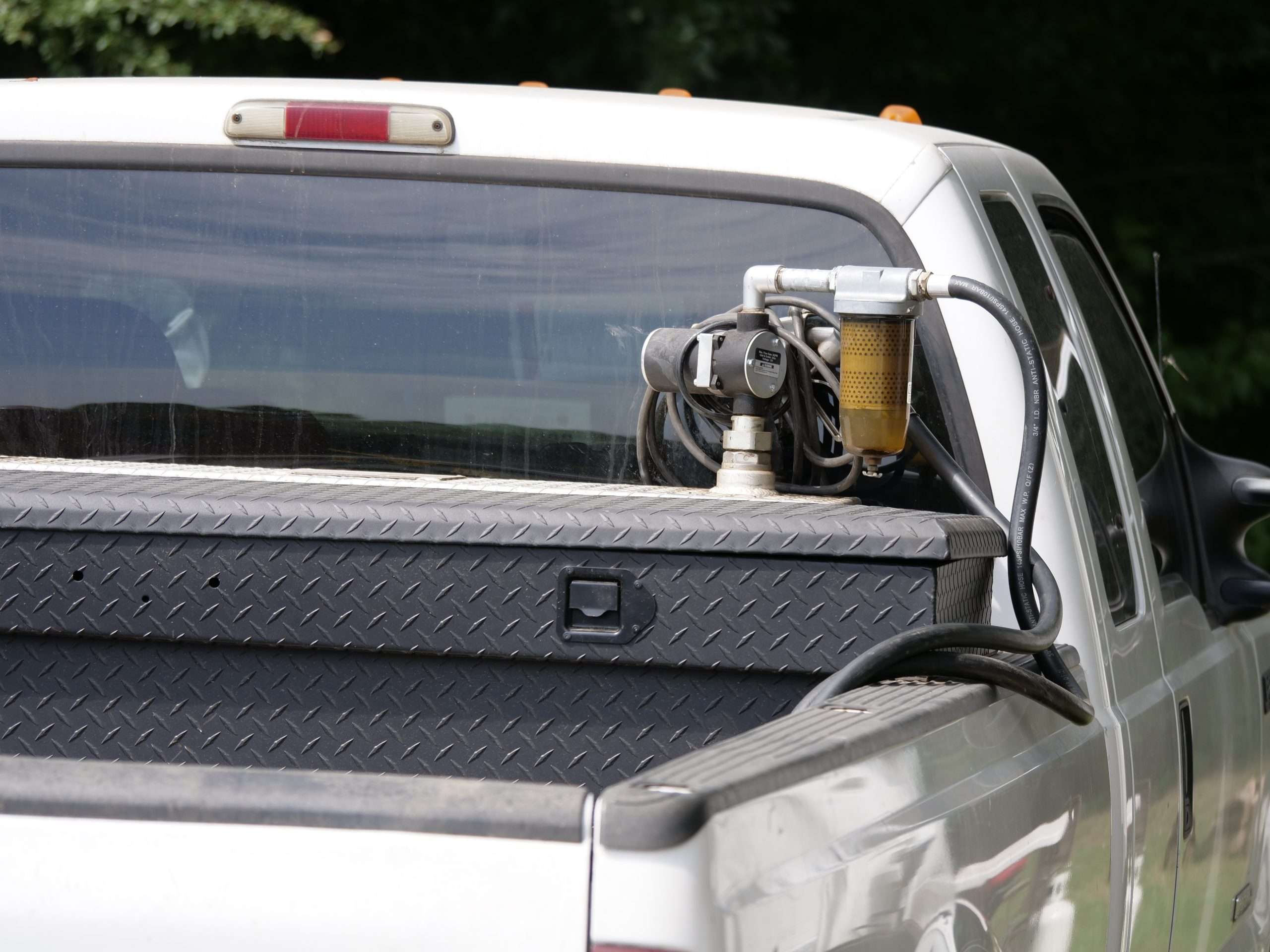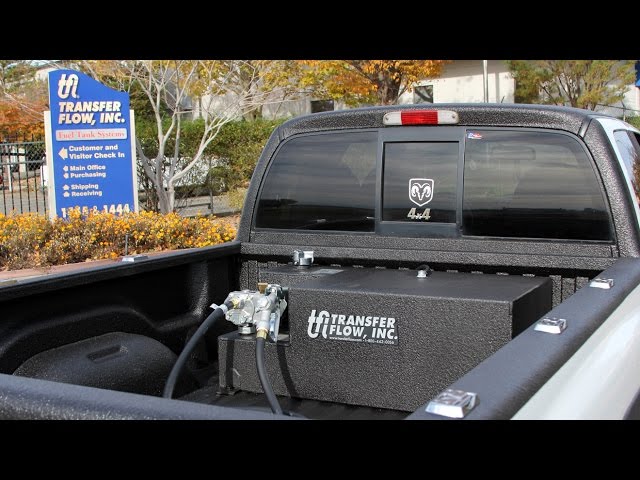Diesel Fuel Tank with Pump for Your Truck Bed | Complete Guide
If you’re a truck owner who needs extra fuel capacity for long hauls or remote work sites, installing a diesel fuel tank with pump in your truck bed could be the perfect solution. This comprehensive guide covers everything from selecting the right tank to installation tips and maintenance practices. We’ll help you understand the benefits, features to look for, and how to safely integrate an auxiliary fuel system into your truck bed setup.

Why Consider a Diesel Fuel Tank for Your Truck Bed?
Many truck owners find themselves needing extra fuel capacity for various reasons. Whether you’re towing heavy loads over long distances, working in remote locations far from fuel stations, or simply want to reduce frequent refueling stops, an auxiliary diesel tank provides practical benefits.
Having extra fuel on hand means you can travel further without worrying about finding the next gas station. This is particularly valuable when towing, since fuel consumption increases significantly under heavy loads. According to the U.S. Department of Energy, towing can reduce fuel economy by up to 30% or more depending on weight and aerodynamics.
Beyond convenience, many truck owners report that buying fuel in bulk when prices are low can lead to significant savings over time. With proper installation and maintenance, these tanks are safe and reliable additions to your truck.
Types of Diesel Fuel Tanks for Truck Beds
Not all auxiliary fuel tanks are created equal. Understanding the different types available will help you make the right choice for your specific needs.
Transfer Flow vs. Titan Tanks: A Comparison
| Feature | Transfer Flow | Titan Tanks |
|---|---|---|
| Material | Aluminum & polyethylene | Cross-linked polyethylene |
| Standard Capacity | 20-100 gallons | 30-120 gallons |
| Pump Options | Gravity & electric | Mainly electric |
| Price Range | $$-$$$ | $$ |
| Warranty | Lifetime limited | 5-year limited |
Material Considerations: Aluminum vs. Polyethylene
Aluminum tanks offer excellent durability and are less likely to crack in extreme temperatures. They’re generally more expensive but provide superior protection against impact damage. Polyethylene tanks, on the other hand, are corrosion-resistant and typically more affordable. They’re also lighter weight, which helps maintain your truck’s payload capacity.
Mike Johnson, a certified diesel technician with 15 years of experience, recommends: “For most applications, cross-linked polyethylene tanks provide the best balance of durability, weight, and corrosion resistance. They’re particularly well-suited for trucks that operate in regions where road salt is used during winter months.”
Choosing the Right Pump System
The pump is the heart of your auxiliary fuel system, and selecting the right one is crucial for reliable operation.

Gravity Feed vs. Electric Pump Systems
Gravity feed systems are simple, reliable, and require no power source. They work well when the auxiliary tank is positioned higher than your main tank. However, they typically transfer fuel more slowly than electric pumps.
Electric pump systems offer faster transfer rates and more control over the fueling process. Most modern systems include automatic shutoff features to prevent overfilling your main tank. The downside is they require proper electrical connections and are generally more expensive.
Flow Rate Considerations
When selecting a pump, consider the flow rate measured in gallons per hour (GPH). For most applications, a pump rated between 15-30 GPH provides a good balance between transfer speed and system cost. Higher flow rates are beneficial for larger tanks but may require upgraded wiring and connectors.
Installation Guide: Step-by-Step Process
Proper installation is critical for safety and performance. While specific steps vary by tank model and truck type, here’s a general overview of the installation process.
Tools and Materials Needed
- Diesel fuel tank with pump kit
- Wrenches and socket set
- Drill with assorted bits
- Hole saw kit
- Safety glasses and gloves
- Thread sealant (fuel-resistant)
- Wire connectors and electrical tape
Installation Steps
First, identify the optimal location in your truck bed. Consider weight distribution, clearance, and accessibility. Most manufacturers provide templates for mounting hardware.
Secure the tank using the provided mounting hardware, ensuring it’s firmly anchored to prevent shifting during transit. According to the National Highway Traffic Safety Administration, improperly secured cargo contributes to thousands of accidents annually, so take your time with this step.
Next, install the fuel lines and vent tubes. Route them away from sharp edges and heat sources. Use protective loom where lines pass through metal surfaces.

For electric pump systems, connect the wiring according to the manufacturer’s instructions. Include an in-line fuse as specified, typically within 18 inches of the power source. Ground the system properly to prevent electrical issues.
Finally, test the system with a small amount of fuel before filling the tank completely. Check for leaks at all connections and verify proper pump operation.
Maintenance and Safety Best Practices
Regular maintenance ensures your auxiliary fuel system remains reliable and safe for years to come.
Routine Inspection Checklist
- Monthly visual inspection for leaks or damage
- Check mounting hardware tightness every 3 months
- Inspect electrical connections for corrosion
- Verify pump operation before long trips
- Check vent lines for obstructions
Fuel Quality Preservation
Diesel fuel can degrade over time, especially with modern ultra-low sulfur formulations. Consider adding a fuel stabilizer if fuel will remain in the tank for extended periods. Water contamination is another concern – many experts recommend using water-separating filter funnels when filling your auxiliary tank.
John Peterson, an agricultural equipment specialist with a TESOL certification who trains international technicians, emphasizes: “Contaminated fuel causes more diesel engine problems than any other single issue. Always use clean containers and filtered transfer systems when filling auxiliary tanks, especially in dusty environments.”
Legal and Regulatory Considerations
Before installing an auxiliary fuel tank, understand the legal requirements in your area.
Most states require tanks over a certain capacity to be properly labeled with “Flammable” warnings. Some jurisdictions have specific requirements for fuel transfer systems, particularly for commercial vehicles. The Department of Transportation regulations for commercial vehicles differ from those for personal use, so verify which rules apply to your situation.

Additionally, some areas have restrictions on how much fuel you can transport without special permits. While these typically apply to larger quantities than most truck beds hold, it’s worth checking your local regulations.
Frequently Asked Questions
How much weight does a full auxiliary diesel tank add?
Diesel fuel weighs approximately 7.1 pounds per gallon. A 50-gallon tank adds about 355 pounds when full, plus the weight of the tank itself (typically 30-80 pounds depending on material).
Can I use the same tank for gasoline instead of diesel?
No, tanks designed for diesel shouldn’t be used for gasoline unless specifically rated for both. Gasoline requires different venting and materials due to its higher volatility.
How long does installation typically take?
For someone with moderate mechanical experience, most systems install in 3-6 hours. First-time installations might take longer, so plan for a full day to complete the job properly.
Will an auxiliary tank void my truck’s warranty?
Properly installed auxiliary tanks generally won’t void your vehicle warranty, but modifications that damage existing components might not be covered. Consult your dealership if you’re concerned about specific warranty implications.
How often should I replace the transfer pump?
Most quality pumps last 5-10 years with normal use. Signs you need replacement include slower transfer rates, unusual noises, or failure to activate.

Final Thoughts
Adding a diesel fuel tank with pump to your truck bed can significantly extend your range and reduce refueling stops. By selecting the right tank and pump combination for your needs, installing it properly, and following regular maintenance practices, you’ll enjoy reliable extra fuel capacity for years to come. Whether you’re a long-haul traveler, work in remote areas, or simply want the convenience of extra fuel capacity, this upgrade delivers practical benefits that many truck owners appreciate.






